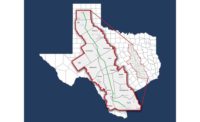A U.S. company working with the Central Japan Railway Co. envisions a magnetically levitated, or maglev, passenger route along the Northeast Corridor between Washington, D.C., and New York City that will reduce travel time to an hour. Work on an environmental impact statement is looming "in the next couple of months" for the first phase between Washington and Baltimore, according to Nazih Haddad, executive vice president with The Northeast Maglev.
Haddad led two major efforts to implement high-speed rail in Florida when he was with the state Dept. of Transportation but was rebuffed by Republican governors. He told members of the Transportation Research Forum's New York chapter last month that the Maryland Dept. of Transportation expected to hear soon from the Federal Railroad Administration regarding a $28-million application for a grant that would help fund further design and permitting.
MDOT noted the application on June 4, about the same time Gov. Larry Hogan (R) paid a visit to the 27-mile-long Yamanashi maglev line, located outside of Tokyo. The trains have reached 375 miles per hour, a world record.
Central Japan Railway's superconducting magnetic levitation technology uses a linear motor, in which the magnets of the train are propelled forward by metal coils within a U-shaped concrete guideway. Central Japan Railway is building a line between Tokyo and Nagoya with the superconducting-maglev technology, with the first 28-mile segment to be completed in the next decade, said Haddad.
The Japanese government would fund much of the Washington-to-Baltimore first phase, which is estimated to cost about $10 billion, added Haddad. He noted that the line would have to capture 50% of the transportation market along the Northeast Corridor to make the effort viable. If the environmental impact statement is completed in three years, the initial segment would take seven years to build, he said.
As for construction of a maglev line to New York City, Haddad admitted, "I am probably not going to be around."



